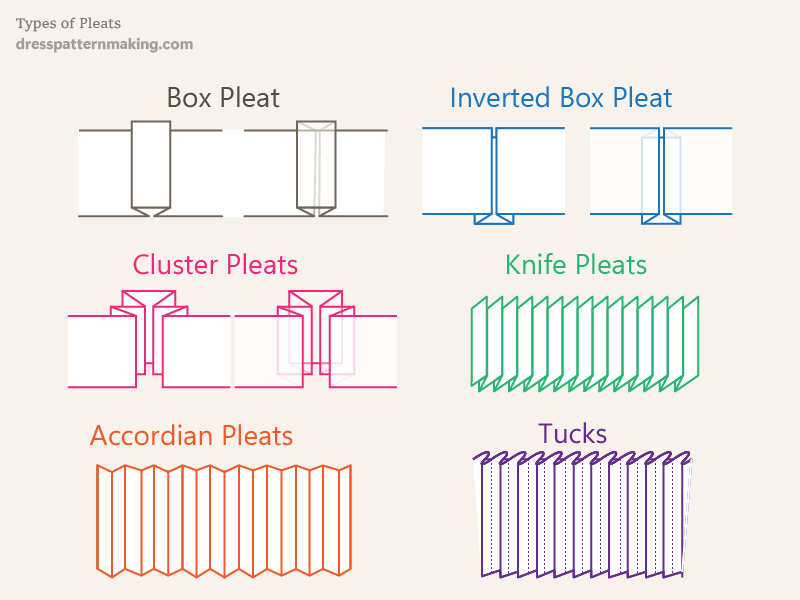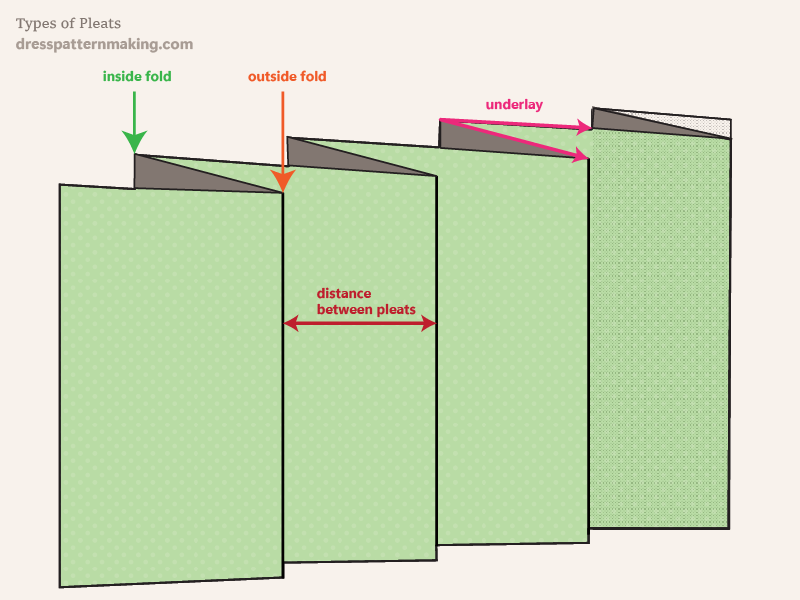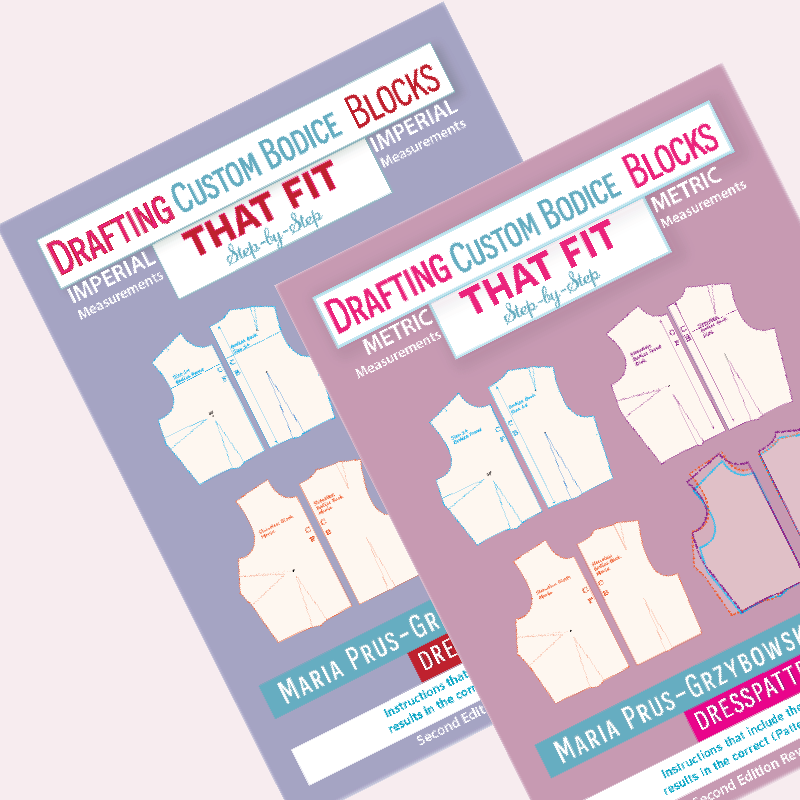Type of Pleats: Box, Inverted, Accordian, Sunburst & More in Garment Design

Pleats are folds of fabric that add fullness. Pleats can be added to the bodice, skirts, dresses, sleeves, pockets, or any other part of the garment. Pleats can be added for a functional purpose such as making a pencil skirt easier to walk in, to add fullness or simply for the purpose of style, or visual interest. Here are the main types of pleats:
- Box Pleats
- Inverted Pleats
- Accordion Pleats
- Knife or side Pleats
- Sunburst pleats
- Tucks (a narrow stitched pleat)
These pleats, with the exception of the sunburst pleat, is shown in the image above.
Pleat Terminology
- Pleat Depth
- Distance from the outside fold to the inside fold.
- Pleat Underlay
- The part of the fabric that is folded underneath; this underlay is always twice the pleat depth.
- Pleat Spacing
- Distance between pleats.

Use of Pleats in Garments
Here are some examples of how and why pleats are used in various parts of a garment:
Pleats in Skirts
- Adding fullness in waist, hips and/or hem;
- For functionality; i.e. kick pleats.
- As a design element; box pleats, knife pleats and sunburst pleats.
Pleats in Bodice, Dresses, Sleeves, Blouses, Jackets
- Box pleat in center back of shirts or blouses for extra ease, allowing the arms to stretch forward and up
- Pleat in the cuff of shirts
- Tuck pleats as a design element on dresses, tops
- Jackets and Jacket linings have an inverted box pleats to ease of movement
Other Pleats
- Trousers often have pleats below the waistband on the front
- Pockets often have pleats as a design element to add some visual interest

